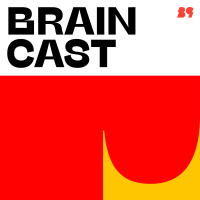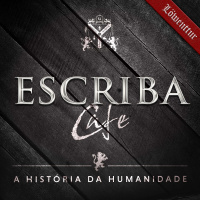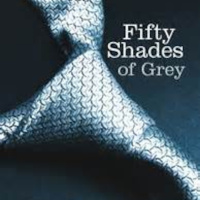Sinopsis
Interviews with Scholars of Islam about their New Books
Episodios
-
Peter Gottschalk, “Religion, Science, and Empire: Classifying Hinduism and Islam in British India” (Oxford UP, 2012)
13/04/2015 Duración: 01h02minWhen did religion begin in South Asia? Many would argue that it was not until the colonial encounter that South Asians began to understand themselves as religious. In Religion, Science, and Empire: Classifying Hinduism and Islam in British India (Oxford University Press, 2012), Peter Gottschalk, Professor of Religion at Wesleyan University, outlines the contingent and mutual coalescence of science and religion as they were cultivated within the structures of empire. He demonstrates how the categories of Hindu and Muslim were constructed and applied to the residents of the Chainpur nexus of villages by the British despite the fact that these identities were not always how South Asians described themselves. Throughout this study we are made aware of the consequences of comparison and classification in the study of religion. Gottschalk engages Jonathan Z. Smith’s modes of comparison demonstrating that seemingly neutral categories serve ideological purposes and forms of knowledge are not arbitrary in order.
-
M. Brett Wilson, “Translating the Qur’an in an Age of Nationalism: Print Culture and Modern Islam in Turkey” Oxford University Press, 2014
06/04/2015 Duración: 56minMuslim debates regarding the translation of the Qur’an are very old. However, during the modern period they became heated because local communities around the globe were rethinking their relationship to scripture in new social and political settings. M. Brett Wilson, Assistant Professor of Religious Studies at Macalester College, provides a rich history of how this conversation unfolding with the late Ottoman period and Republic of Turkey in Translating the Qur’an in an Age of Nationalism: Print Culture and Modern Islam in Turkey (Oxford University Press in association with the Institute of Ismaili Studies, 2014). The Qur’an’s translatability is contested from various perspectives (both old and new) but emerging print technologies, shifting political authority, and changing economies of knowledge production offer contemporary challenges that mark the demand for Turkish translations. Wilson narrates the production of vernacular interpretations and commentaries, unofficial translations,
-
Raymond Farrin, “Structure and Qur’anic Interpretation” (White Cloud Press, 2014)
23/03/2015 Duración: 57minInterest in the structure of the Qur’an has its beginnings in the ninthcentury CE with Muslim scholars. Since that time, Muslim and Western scholars have debated the coherence of the Qur’an’s structure. Raymond Farrin, professor of Arabic at the American University of Kuwait, opens his newest book, Structure and Qur’anic Interpretation:A Study of Symmetry and Coherence in Islam’s Holy Text (White Cloud Press, 2014) with a historical synopsis of the views adopted by the two primary camps regarding the structure of the Qur’an and the development of the study of the Qur’an’s constitution. Following in the footsteps of Muslim scholars and Western scholars of Islam who acknowledged and demonstrated patterns of connectivity between verses and chapters, Farrin argues that the entirety of Qur’an is organized according to three common patterns of symmetry: parallelism, chiasm, and, the most ubiquitous of three, concentrism. As the reader moves form chapter to chapt
-
Sophia Rose Arjana, “Muslims in the Western Imagination” (Oxford UP, 2015)
10/03/2015 Duración: 01h03minIn Muslims in the Western Imagination (Oxford University Press, 2015), Sophia Rose Arjana explores a variety of creative productions–including art, literature, film–in order to tell a story not about how Muslims construct their own identities but rather about how Western thinkers have constructed ideas about Muslims and monsters. To what extent are these imaginary constructs real? Is it possible for one’s imagination to create things that are more telling than what is actually real? Arjana’s monograph is compelling, in part, because of the plethora of examples she offers–from a range of cultures and time periods–to help us understand just how deeply stereotypes and fears run in the very fabric of Western imaginations. She demonstrates, in fact, that it’s not just Muslims who are portrayed in troubling ways, but also characters that seem foreign to any extent. Dracula, for example, pushes boundaries between Muslim and Jewish–and is also not quite human; in this w
-
Cabeiri Robinson, “Body of Victim, Body of Warrior: Refugee Families and the Making of Kashmiri Jihadists” (University of California Press, 2013)
19/02/2015 Duración: 01h31minThe idea of jihad is among the most keenly discussed yet one of the least understood concepts in Islam. In her brilliant new book Body of Victim, Body of Warrior: Refugee Families and the Making of Kashmiri Jihadists (University of California Press, 2013), Cabeiri Robinson, Associate Professor of International Studies and South Asian Studies at the University of Washington engages the question of what might an anthropology of jihad look like. By shifting the focus from theological and doctrinal discussions on the normative understandings and boundaries of jihad in Islam, Robinson instead asks the question of how people live with perennial violence in their midst? The focus of this book is on the Jihadists of the Kashmir region in the disputed borderlands between India and Pakistan, especially in relation to their experiences as refugees (muhajirs). By combining a riveting ethnography with meticulous historical analysis, Robinson documents the complex ways in which Kashmiri men and women navigate the interacti
-
Neilesh Bose, “Recasting the Region: Language, Culture, and Islam in Colonial Bengal” (Oxford UP, 2014)
18/02/2015 Duración: 47minIn his new book Recasting the Region: Language, Culture, and Islam in Colonial Bengal (Oxford University Press, 2014),Neilesh Bose analyses the trajectories of Muslim Bengali politics in the first half of the twentieth century.The literary and cultural history ofthe region explored in the book reveal the pointedly Bengali ideas of Pakistan that arose as an empire ended and new countries were born. Learn more about your ad choices. Visit megaphone.fm/adchoices
-
John Renard, “Islamic Theological Themes: A Primary Source Reader” (U of California Press, 2014)
06/02/2015 Duración: 54minIslamic theology is generally understood or approached in terms of its systematic or speculative forms. In Islamic Theological Themes: A Primary Source Reader (University of California Press, 2014), John Renard, Professor of Theological Studies at Saint Louis University, has produced a collection of primary sources that thinks through theological deliberation far beyond the narrow strictures of kalam. This inclusive model is both chronologically expansive and geographically diverse. Renard offers relevant passages from the Qur’an and hadith, the tafsir tradition, narrative histories, manuals of moral direction, texts from spiritual guidance, creedal statements, and political theology. All of these sources are artfully introduced leading the reader through the diversity of the Islamic tradition. In our conversation we discussed human responsibility, the nature of God, the evaluation of non-Muslim beliefs, what merits community membership, the spiritual journey, functions of poems, stories, and letters, I
-
Isra Yazicioglu, “Understanding Qur’anic Miracle Stories in the Modern Age” (Penn State UP, 2013)
23/01/2015 Duración: 01h04minIn Understanding Qur’anic Miracle Stories in the Modern Age (Pennsylvania State University Press, 2013), Isra Yazicioglu draws connections between an array of scholars, from different time periods and cultures, in order to make sense of miracles and miracle stories in the Qur’an. What are miracles? Why do they occur in stories? And how does the Qur’an define this complicated concept in particular ways? To address these questions and others Professor Yazicioglu gives particular attention to Ghazali (d. 1111), Ibn Rushd (d. 1198), David Hume (d. 1776), Charles Peirce (d. 1914), and Said Nursi (d. 1960), which makes for a rich and multilayered investigation into the limits and possibilities of science, epistemology, and scriptural hermeneutics. In our interview we also discuss Professor Yazicioglu’s intellectual background as a biologist in secular Turkey, turned scholar of religion and how her own social context has influenced and challenged her scholarly pursuits. Yazicioglu’s com
-
Kavita Datla, “The Language of Secular Islam: Urdu Nationalism and Colonial India”
24/12/2014 Duración: 52minIn her brilliant new book, The Language of Secular Islam: Urdu Nationalism and Colonial India (University of Hawaii Press, 2013),Kavita Datla, Associate Professor of History at Mount Holyoke College, explores the interaction of language, nationalism, and secularism by focusing on the religious and social imaginaries of important twentieth century Muslim scholars from the state of Hyderabad, especially those associated with the institution of Osmania University. How were Urdu and Arabic mobilized for projects of nationalism by the pioneers of Osmania University, and in what ways can a history of such intellectual and social projects complicate the religion/secular binary? This is among the central questions that anchor the conceptual stakes of this important book. By effortlessly weaving together a close reading of previously unexplored primary texts with nuanced historiographical analysis of the colonial context, Datla presents an intellectually rich and exciting examination of modern Indian Muslim understand
-
Michael Hawkins, “Making Moros: Imperial Historicism and American Military Rule in the Philippines’ Muslim South” (NIU Press, 2012)
12/12/2014 Duración: 01h01minFor many Muslim communities particular religious identities were formulated or hardened within colonial realities. These types of cultural encounters were structural for the various Muslim tribes in the southern Philippine islands of Mindanao and Sulu during the turn of the twentieth century. In Making Moros: Imperial Historicism and American Military Rule in the Philippines’ Muslim South (Northern Illinois University Press, 2012), Michael Hawkins, Assistant Professor of history at Creighton University, demonstrates the dramatic consequences of this short historical moment for Filipino Muslims. Between 1899-1913, professional ethnographers and military officers worked to represent Filipino Muslims as noble primitive warriors. Various communal identities were fused into a singular construction, the Moro. Moro identity was constructed in the American imagination to serve colonial civilizing agendas. Ultimately, this period served as a crucial moment for Filipino Muslim identity and is looked back upon wit
-
Sahar Amer, “What is Veiling?” (UNC Press, 2014)
18/11/2014 Duración: 44minThere are few concepts commonly associated with Islam and Muslims today that evoke more anxiety, phobia, and paranoia than the veil, commonly translated as the hijab. Seen by many as the most quintessential symbol of the alleged Muslim oppression of women, the veil has for some time represented a subject of tremendous rage, debate, polemics, and fantastical stereotypes. But what is the veil? What is its history? Is the veil primarily an Islamic concept and object? What are some of the problems associated with reducing the veil to religion? What is the genealogy of sensationalized representations of the veil in popular discourse and media? These are among the questions addressed by Sahar Amer, Professor of Arabic and Islamic Studies at the University of Sydney, in her brilliant new book: What is Veiling? Published by the University of North Carolina Press in 2014. Remarkably nuanced and thoughtful, this timely book takes readers on a riveting intellectual journey that brings into focus the complexities of the
-
Vahid Brown and Don Rassler, “Fountainhead of Jihad: The Haqqani Nexus, 1973-2012” (Oxford UP, 2013)
14/11/2014 Duración: 01h05minVahid Brown and Don Rassler‘s Fountainhead of Jihad: The Haqqani Nexus, 1973-2012 (Oxford University Press, 2013) is a meticulously researched and remarkably detailed exposition of the Haqqani network’s growth and ongoing importance among Pakistani militant organizations. Beginning with an expansive history of the Haqqani family’s background, and subsequent emergence as a critical lynchpin in the Pakistani – and by extension US – anti-Soviet efforts in Afghanistan, the book goes on to cover the Haqqanis’ present operations, including its involvement in attacks on NATO, Indian, and government forces in Afghanistan. By shedding light on a group that, while sometimes mentioned in news media, is largely unknown to non-specialists, Fountainhead of Jihad is a major scholarly contribution to the subject of South Asian extremism. The book is in large part based on fascinating primary source material, much of it gleaned from seized documents contained in the US military’s HARM
-
Michael Cook, “Ancient Religions, Modern Politics: The Islamic Case in Comparative Perspective” (Princeton UP, 2014)
05/11/2014 Duración: 43minMichael Cook, a widely-respected historian and scholar of Islam begins his book with a question that everyone seems to be asking these days: is Islam uniquely violent or uniquely political? Why does Islam seem to play a larger role in contemporary politics than other religions? The answers that are provided for these questions, particularly in the media, range from the ludicrous to the islamophobic. Cook, on the other hand, embarks on a much more nuanced and learned attempt at answering the question. His book, Ancient Religions, Modern Politics: The Islamic Case in Comparative Perspective (Princeton University Press, 2014), rightly begins with the assumption that if there is something unique about Islam in this regard, the uniqueness of it can only be understood through comparative study of other religions and their engagement with politics. Cook looks at Hinduism and Christianity’s involvement in modern political life and places them alongside Islam, delving deeper into issues of political identity, wa
-
Amy Evrard, “The Moroccan Women’s Rights Movement” (Syracuse University Press, 2014)
30/10/2014 Duración: 01h04minAmy Evrard‘s first book, The Moroccan Women’s Rights Movement (Syracuse University Press, 2014), examines women’s attempts to change their patriarchal society via their movement for equality and rights. At the center of Evrard’s book is the 2004 reform of the Family Code known as the Mudawwana, in which Moroccan women made important gains in marriage, divorce, and custody rights. Combining historical analysis of legal codes, nuanced surveys of the complicated political arena, and richly developed stories of individual women, Evrard demonstrates how women’s integration is stymied by poverty and illiteracy, as well as by nationalist and anti-modernization forces. At the same time, women activists are learning how to navigate among political and civic actors to achieve their goals, and in the process, convincing more and more Moroccan women of their rights.Learn more about your ad choices. Visit megaphone.fm/adchoices
-
Jonathan A. C. Brown, “Misquoting Muhammad” (Oneworld Publications, 2014)
30/10/2014 Duración: 59minMany people have described Muslims modernities as being fundamentally disrupted by individual and civilizational encounters with western society. Wether rejecting or accepting alternative modes of thinking Muslims have responded to these new challenges with increasing regularity for over 200 years. Misquoting Muhammad: The Challenge and Choices of Interpreting the Prophet’s Legacy (Oneworld Publications, 2014) focuses on one of the central tasks for Muslims in the contemporary period, namely the interpretation of scripture and tradition. Jonathan A. C. Brown, Associate Professor and Associate Director of the Prince Alwaleed Bin Talal Center for Muslim-Christian Understanding at Georgetown University, carefully maps out multiple Muslim interpretive strategies in order to reveal the links and legacies between the pre-modern and contemporary periods. After a detailed explanation of pre-modern schools of thought, attitudes towards scripture, and hermeneutical methods Brown tackles the fragile relationship b
-
Amanullah De Sondy, “The Crisis of Islamic Masculinities” (Bloomsbury, 2014)
27/10/2014 Duración: 59minWhat gets to count as Islam? In the current political climate this question is being repeated in a variety of contexts. The tapestry of various Islamic identities is revealed in an investigation of gender. In The Crisis of Islamic Masculinities (Bloomsbury, 2014), Amanullah De Sondy, Assistant Professor of Religious Studies at the University of Miami, tackles the construction of Muslim manhood in several interpretive traditions. These forms of masculinity – both ideal & reviled – are taken across a wide spectrum of thought, from Islamist perspectives to those challenging patriarchy. Many of the discussions revolve around similar themes, most importantly family, marriage, sexuality, and veiling. Other constructions of masculinity challenge heteronormativity within Muslim identities. The Qur’an is central to many of the interpretations discussed in the book but De Sondy demonstrates that here too we are not presented with a singular and clear ideal of masculinity. Qur’anic descriptio
-
Sarah Bowen Savant, “The New Muslims of Post-Conquest Iran: Tradition, Memory, and Conversion” (Cambridge UP, 2014)
16/10/2014 Duración: 57minSarah Bowen Savant, Associate Professor at the Institute for the Study of Muslim Civilisations at the Aga Khan University in London, addresses important questions about conversion among Persian peoples from the ninth to eleventh century CE in her work The New Muslims of Post-Conquest Iran: Tradition, Memory, and Conversion (Cambridge University Press, 2013). Memory is the centerpiece of her study. In the first half of her work, Savant’s analysis of memory, known as mnemohistory, coalesces around certain “sites of memory” which can include people, such as Salman al-Farisi, places, and events, with particular attention paid to conquest (futuh) narratives. These cases demonstrate how Persian identity was woven into the framework of pre-Islamic history and early Islam. However, remembering is not the only aspect that helped shape Persian, Muslim identity; forgetting is an equally important element according to Savant. Forgetting allowed irreconcilable features of Persian identity and history to
-
Donald Holbrook, “The Al-Qaeda Doctrine: The Framing and Evolution of the Leadership’s Public Discourse” (Bloomsbury, 2014)
03/10/2014 Duración: 56minDonald Holbrook‘sThe Al-Qaeda Doctrine: The Framing and Evolution of the Leadership’s Public Discourse (Bloomsbury, 2014)represents a significant scholarly contribution to the study of Al-Qaeda and Islamic terrorism more broadly. Through a remarkably exhaustive, longitudinal study of over 260 public statements from Ayman al-Zawahiri and Osama bin Laden, Dr. Holbrook exposes Al-Qaeda’s ideology, grievances, objectives, and inconsistencies. He brings a level of rigor to this subject which is frequently absent in “expert” studies on terrorism, having databased and coded Al-Qaeda communiques for a variety of topics and characteristics. The Al-Qaeda Doctrine will likely become the definitive scholarly monograph on the subject for many years to come. Holbrook’s work is indeed becoming more relevant every day, as ideological ruptures emerge in the jihadist community, most recently evidenced by the Al-Qaeda leadership’s furious response to the Islamic State’s newly decl
-
Iqbal Sevea, “The Political Philosophy of Muhammad Iqbal: Islam and Nationalism in Late Colonial India” (Cambridge UP, 2012)
02/10/2014 Duración: 55minThe towering Indian Muslim poet and intellectual Muhammad Iqbal (d. 1938) is among the most contested figures in the intellectual and political history of modern Islam. Heralded by some as the father of Pakistan and by others as a champion of pan-Islam, Iqbal’s legacy is as keenly debated as it is celebrated and appropriated. In his fascinating new book The Political Philosophy of Muhammad Iqbal: Islam and Nationalism in Late Colonial India (Cambridge University Press, 2012), Iqbal Sevea, Assistant Professor of history at UNC-Chapel Hill, explores Iqbal’s political and religious thought in a remarkably nuanced and dazzling fashion. Bringing into question the tendency to approach Iqbal through the prism of constraining categories like nationalist, modernist, and pan-Islamic, Sevea convincingly shows that the dynamism of Iqbal’s thought lay precisely in how he traversed multiple intellectual and ideological registers. Iqbal’s view of the nation did not correspond to the modern notion of
-
Nabil Matar, “Henry Stubbe and the Beginnings of Islam: The Originall and Progress of Mahometanism” (Columbia UP, 2013)
18/09/2014 Duración: 54minIn Henry Stubbe and the Beginnings of Islam: The Originall and Progress of Mahometanism (Columbia University Press, 2014), Nabil Matar masterfully edits an important piece of scholarship from seventeenth-century England by scholar and physician, Henry Stubbe (1632-76). Matar also gives a substantial introduction to his annotated edition of Stubbe’s text by situating the author in his historical context. Unlike other early modern writers on Islam, Stubbe’s ostensible goals were not to cast Islam in a negative light. On the contrary, he sought to challenge popular conceptions that understood Islam in negative terms, and although there is no evidence that Stubbe entertained conversion, he admits many admirable characteristics of Islam, ranging from Muhammad’s character to the unity of God. The English polymath was well versed in theological debates of his time and therefore equipped all the more to write the Originall, given the benefit of his comparative framework, which in part explains why t














